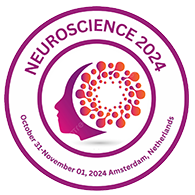Day 1 :
Keynote Forum
Dr. Ramachandran Muthiah
President of Neuroscience , USA
Keynote: Neurocognitive dysfunction in Rasopathies
Time : 2 PM

Biography:
Ramachandran Muthiah, Consultant Physician & Cardiologist, Zion hospital, Azhagiamandapam and Morning star hospital. Born on 10/5/1966.. Mother Swornam belongs to keezhkulam village and Father Muthiah belongs to Enayam thoppu and both were farmers.School education at Aanan vilai and Concordia higher secondary school Pootteti. Medical education from Tirunelveli and Madurai medical colleges under Madurai Kamaraj (MBBS), Dr.MGR medical university at Chennai (MD,DM). Got married with an Agricultural scientist Rajula shanthy in 1992 and having one son R.Jeremy and now living with an orphan girl R.Russulsy. Mental hospital transfer at Chennai, jailed at Balaramapuram with break of backbone by kerala police. Rural health services at Keelachekkarakudi, Aryappapuram primary health centres and ESI hospital, Singanallur at Coimbatore. Teaching faculty at Coimbatore, Madras and Thoothukudi Govt medical colleges. Published papers in Cardiosource, American College of Cardiology Foundation, Case Reports in Clinical Medicine (SCIRP) and Journal of saudi heart association.
Abstract:
RASopathies are resulting from germline mutations of the protooncogene HRAS and affect SHP2, SOS1, RAS, RAF and MEK proteins. Dr. White says. a group of related disorders including Costello syndrome, Noonan syndrome (NS), cardiofaciocutaneous (CFC) syndrome, and neurofibromatosis 1 (NF1), caused by abnormal functioning of the Rasâ€mitogenâ€activated protein kinase (RAS/MapK) pathway that controls cell proliferation, differentiation, survival and its dysregulation causes clinically overlapping genetic disorders, called as ‘Rasopathies’. In this pathway, Ras, a GTPase, transmits extracellular signaling from receptor tyrosine kinases to two serine/threonine kinases (Raf and MEK) and, finally, to the activation of MAPKs. Rasopathies are developmental disorders characterised by postnatal growth retardation with delayed skeletal maturation, psychomotor retardation, cutis laxa, and acanthosis nigricans. In 2009, gain-of-function missence mutation in SHOC2, C4a> G(Ps2g), identified in NS-like syndrome with loose anagen hair, severe intellectual disability, hypernasal voice and skin abnormalities.The splicing efficiency of activating HRAS mutations can determine the rasopathy phenotype. Gene correction of these germline mutations to restore normal protein functions is anticipated as a new therapeutic option. Neurocognitive involement is a common feature of rasopathies. Isoprenylation involves the enzyme farnesyl transferase (FTase) transferring a farnesyl group from farnesyl pyrophosphate (FPP) to the pre-Ras protein. Pathway modulators or small molecule inhibitors such as statins causes significant improvement in verbal and nonverbal memory, visual attention & efficacy by inhibiting the posttranscriptional lipid modification of RAS. RAF-1 inhibition by C-type Natriuretic Peptide (CNP) improved bone growth in preclinical animal models and it is a potential targeted therapeutic drug to improve the stature of patients affected with disruption of the RAS/MEK/ERK pathway. PAR therapy (potassium ascorbate with ribose) combines the antioxidant action of vitamin C with stabilizing intracellular effects of potassium and causes improvement of skin and appendage lesions, better evolution of psychomotor development, no Progression of heart hypertrophy, nor tumor development.
Keynote Forum
Dr. Sama Rahnemayan
MD, Neurosciences Research Center, Tabriz University of Medical Sciences, Tabriz, Iran.
Keynote: Neural Roadmap of Positive, Negative, and Neutral Mood Induction impact on Driving Behavior Using fMRI
Time : 11:00 am

Biography:
Sama Rahnemayan is a medical graduate with a history of research in different neuroscience related fields. She is currently working as a research assistant in one of the leading neuroscience research centers of Iran and has a background of working as a guest researcher at Ruhr University Bochum in Germany and Bogazici University in Turkey. Her aim is to continue her academic character as a neuroscientist with medical background to address answers and solutions to practical issues, affecting everyday life. Her latest research focus has been merely on studying driving behavior and its risk factors, especially based on fMRI results. The present abstract, contains the results of her latest study, which has a very novel design and has not been studied anywhere before.
Abstract:
Introduction: The correlation between cognitive function, different mood states and their effect on driving behavior is complex and still remains unclear. This association has been in previous cases, studied only by subjective methods, which depend on individual differences and are therefore prone to biases. Here, we aimed to explore the relationship between driving behavior and mood, by functional magnetic resonance imaging (fMRI).
Methods: In a cross-sectional design, 28 male right-handed drivers, aged between 20 to 30 years were randomly selected and included in the study. Each participant drove virtually in an fMRI compatible driving simulator, after auditory and visual induction of positive, negative and neutral mood; and fMRI was performed during driving to explore driving-related brain activity alterations, and the impact of mood state on these effects. Statistical analysis was performed using SPM software by performing seed based connectivity analysis, after preprocessing steps.
Results: Comparing positive and neutral mood driving, decreased connectivity was found between medial prefrontal cortex (mPFC) and anterior prefrontal cortex (aPFC) and right dorsal anterior cingulate cortex (ACC) in positive mood, while increased connectivity was observed in the OFC and parts of aPFC and dorsal ACC. Comparing negative and neutral mood driving, decreased connectivity in extensive bilateral aPFC regions was seen in negative mood, whereas increased connectivity was found in bilateral aPFC, orbitofrontal cortex (OFC), and some left aPFC regions.
Conclusion: The observed patterns of brain activity and functional connectivity provide insights into the neural mechanisms underlying mood-induced driving behaviors and their potential impact on car accidents. The findings suggest that positive and negative mood states can affect driving behavior through distinct neurocognitive processes related to cognitive control, emotion regulation, and attentional mechanisms. Further research and the development of targeted interventions are necessary to leverage these findings in promoting safer driving practices and reducing accident risk.

